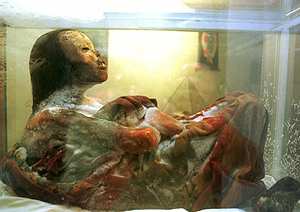
Some of the best-preserved mummies date from the Inca period in Peru and Chile some 500 years ago, where children were ritually sacrificed and placed on the summits of mountains in the Andes. Also found in this area are the Chinchorro mummies, which are among the oldest mummified bodies ever found. The cold, dry climate had the effect of desiccating the corpses and preserving them intact. In 1995, the frozen body of a 12- to 14-year-old Inca girl who had died some time between 1440 and 1450 was discovered on Mount Ampato in southern Peru. Known as "Mummy Juanita" ("Momia Juanita" in Spanish) or "The Ice Maiden", some archaeologists believe that she was a human sacrifice to the Inca mountain god Apus.

Momia Juanita (Spanish for "Mummy Juanita"), better known in English as the "Ice Maiden," is an Inca mummy of a girl, between 12-14 years old, who died sometime between 1440 and 1450. She was discovered in southern Peru in 1995 by anthropologist Johan Reinhard and his Peruvian climbing partner Miguel Zarate. Also known as the Lady of Ampato and the Frozen Lady, Juanita toured the United States in 1996 and Japan in 1999 before returning to Peru.
The mummy was remarkably well-preserved for 500 years, making her one of the more important mummy finds in recent years; indeed, this discovery was chosen in 1995 by Time magazine as one of the world's top ten discoveries. According to Reinhard, when found in Mount Ampato (part of the Andes cordillera), the mummy weighed approximately 80 pounds. Reinhard and his partner then came to the realization that the heavy body mass was due to the mummy's flesh being frozen. This was an extraordinary discovery because it allowed biological tests to be run on the lung, liver, and muscle tissue, revealing new insights on Inca health and nutrition during the reign of the Sapa Inca Pachacuti.
Discovery
Johann Reinhard had made various ascents in several mountain ranges like the Himalayas (in Nepal) and the Peruvian Andes. As an archaeologist, he had studied Machu Picchu, Chavin and the Nazca Lines. He became very familiar with the Peruvian heights and the nature of the country's native inhabitants. For him and his partner, Miguel Zarate, a guide from Arequipa, it became a regular routine to climb the Apus, legendary mountain spirits that Peruvians have feared and worshipped since the time of the Inca.
In 1995, during an ascent of Mt. Ampato, Reinhard and Zarate found inside the summit crater a bundle that had fallen down from an Inca site when the ridge had collapsed due to the melting caused by volcanic ash that has fallen from the nearby erupting volcano of Sabancaya. To their astonishment, the bundle turned out to contain a remarkably well-preserved mummy of a young girl. In addition, they found - strewn about the mountain slope down which the mummy had fallen - many items that had been left as offerings to the Inca gods, such as statues and food items. A couple of days later, the mummy and the objects were taken to Arequipa; the remains of the mummy were initially kept in a special refrigerator.
The mummy caused a sensation in the scientific world due to the well-preserved state in which it was found. Between May and June of 1996, the mummy was exhibited in the headquarters of National Geographic Society in Washington D.C., in a specially acclimatized conservation/display unit. In its June 1996 edition, National Geographic also included an article dedicated to the discovery of Juanita and in 2005 Johan Reinhard published a detailed account in his book The Ice Maiden: Inca Mummies, Mountain Gods, and Sacred Sites in the Andes Washington, D.C.: National Geographic Society.
This young girl's body was taken to the United States and went through to a virtual autopsy in the laboratories of Johns Hopkins Hospital in Baltimore, Maryland. The mummy had tomographies taken, as well as X-ray examinations. Scientists reached the following conclusions about Juanita:
she had died at the age of 14, between approximately 1440 and 1450;
she had had a stature of 1.40 meters;
she had weighed 80 pounds at the time of death;
she was slender in build and body shape;
she had not suffered of any illness;
she had had a perfect denture and strong bones;
she had had a good and well-balanced diet;
she had fasted one day before the sacrifice;
she had a 5cm fissure in the skull ; and
she had died from blunt force trauma to the head
It is believed by some archaeologists that the Ice Maiden was in fact a human sacrifice to the Inca mountain god (Apus). The Ice Maiden was then buried by the Inca priests atop Mount Ampato (20,700 feet, or 6,309 m) in Peru, and left undisturbed until discovered by Johann Reinhard in 1995.
These discoveries seem to support the theory that during the Inca empire, human sacrifice rituals were still practiced, contrary to the common theories of some archaeologists and historians who deny it. Indeed the mummy was, in Reinhard's opinion, "a young sacrifice victim killed by Inca priests to appease the gods, especially the gods of the mountain." However, what indeed is indicated is that during this epoch, neither anthropophagy nor necrophagy were practiced; on the contrary, both were punished.
Konrad Spindler has said that Juanita is "the best conserved human being from America", adding that she is "the first woman found in Andes closer to Cuzco she could have been from Cuzco and had arrived alive to the snowy mountains and then sacrificed in a couple."
DNA Samples
The scientists of Maryland's Institute for Genomic Research (TIGR) performed laboratory tests on Juanita's body and were able to recover the heart tissues of the young girl. These tests served to identify her DNA and compare it with the Human Genome Project.
The studies demonstrated that Juanita had a close relationship with the Ngoge tribe of Panama and with old Taiwanese and Korean races. During five years, those involved in the Human Genome Project had compiled samples of blood of every nation of Earth, allocating the groups of DNA geographically. According to that world sample, "the human race descended from the trees of northeast Africa and spread through all the corners of the world".
Whereabouts
Juanita is now housed in the Museum of the Universidad Catolica de Santa Maria of Arequipa, Peru. She is currently encased in a special glass box at a constantly cold temperature to continue preserving her body. In the same museum are "Urpicha" (palomita, "little dove" in Spanish, a mummy found on the volcano Pichu Pichu of Arequipa); "Sarita" (found on the Sarasara volcano, between Arequipa and Ayacucho), and five other mummies found in El Misti volcano, also near Arequipa.
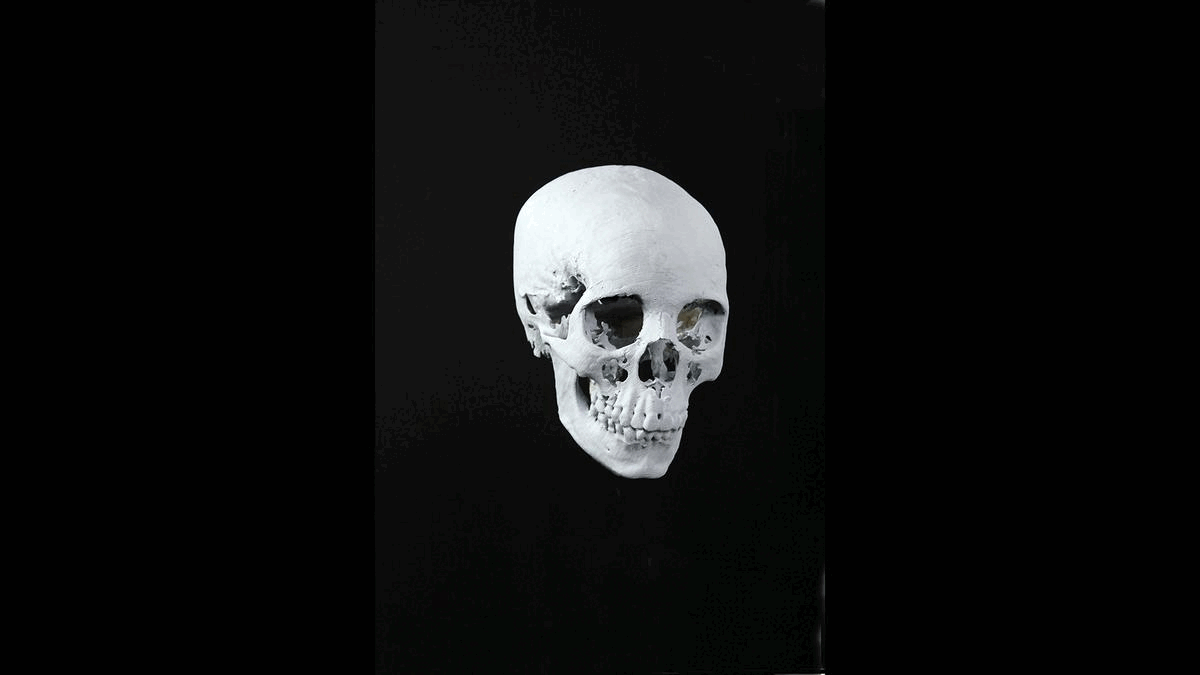
Incan 'Ice Maiden' who died in sacrifice 500 years ago revealed in hyper-realistic facial reconstruction Live Science - November 3, 2023
More than 500 years ago, an Incan girl was killed as part of a sacrificial ritual at a mountain summit in Peru. Her frozen mummified remains were discovered in 1995 by archaeologists, who named her the "Inca Ice Maiden" and "Juanita." However, no one knew what the mysterious girl looked like - until now.
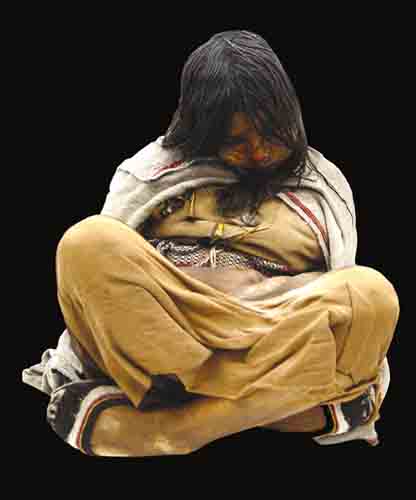
The mummy of a 15-year-old girl called Juanita "La Doncella" (The Maiden) and was displayed for the first time in September 2007. Hundreds of people packed a museum in Salta, Argentina, to see "la Doncella" - Spanish for "the Maiden" - a 15-year-old girl whose remains were found in 1999 in an icy pit on Llullaillaco volcano, along with a 6-year-old girl and a 7-year-old boy.
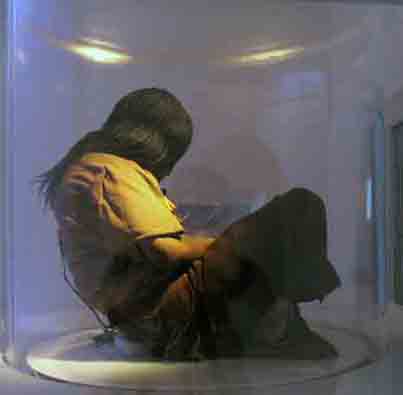
Scientists believe the so-called Children of Llullaillaco were sacrificed more than 500 years ago in a ceremony marking the annual corn harvest. Dressed in fine clothes and given corn alcohol to put them to sleep, the victims were then left to die at an elevation of 22,080 feet. The mummy is kept in a chamber that pumps chilled air through a low-oxygen atmosphere, simulating the subfreezing conditions where it was found. Seated with her legs bent and her arms resting on her stomach, the Maiden's remains are still adorned with a gray shawl and bone and metal ornaments. Scientists say her face was daubed with red pigment and around her mouth they found flecks of coca leaf, which is chewed by highland Indians to blunt the effects of altitude. The Children of Llullaillaco were found at the highest elevation ever discovered for sacrificial victims of the former Inca empire, which ran along the Andes from present-day northern Argentina to Peru.
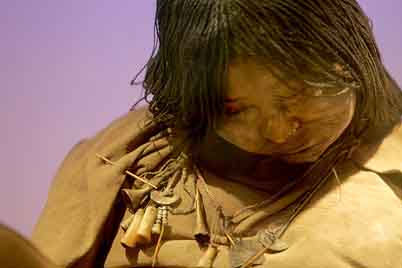
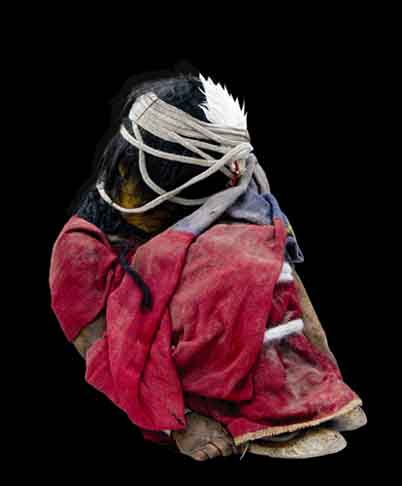
The Boy of Llullaillaco. From his elaborate clothing, scientists
inferred that the 7-year-old was born to Incan nobility.
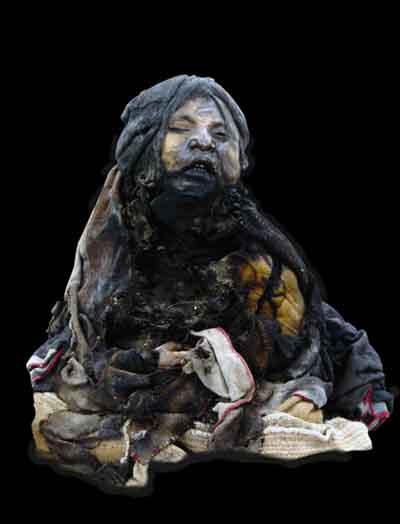
The Girl of Lightning. Her burial site was apparently struck by lightning,
singeing her remains. She was 6 years old at the time of her death.
Peru gas workers find thousand-year-old mummy of a boy believed to be over 1,000 years old PhysOrg - June 20, 2025
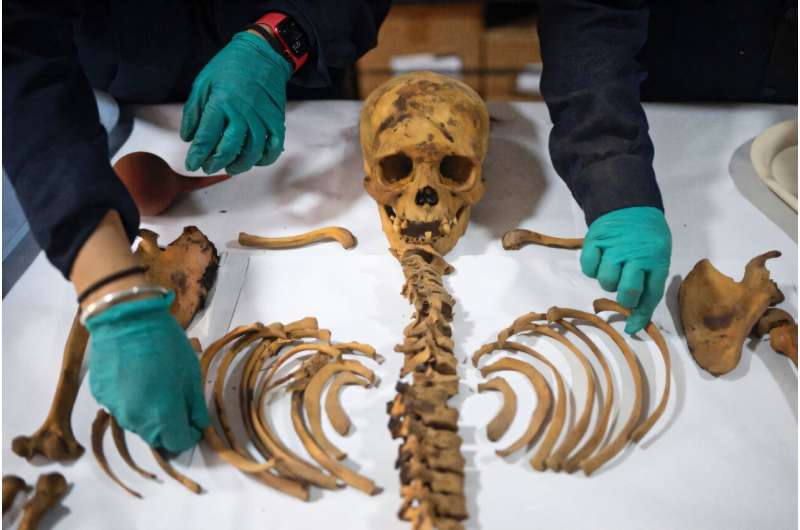
Peruvian gas workers this week found a thousand-year-old mummy while installing pipes in Lima, their company said, confirming the latest discovery of a pre-Hispanic tomb in the capital. The workers found the trunk of an huarango tree (a species native to coastal Peru), "which served as a tomb marker in the past," at a depth of 50 centimeters (20 inches), archaeologist Jesus Bahamonde, scientific coordinator of Calidda gas company, told reporters.
Breathtaking Tattoos Revealed on Peruvian Mummies From 1,200 Years Ago Science Alert - January 13, 2025
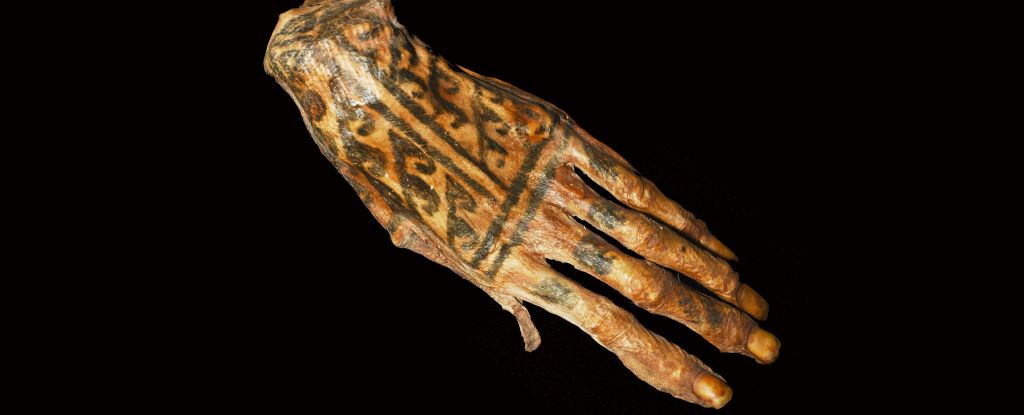
The intricate details of tattoos inscribed on the skin of South American mummies are now revealed in all their breathtaking glory. With a technique used to study dinosaur fossils, a team of scientists has revealed the fine work that went into creating the elaborate tattoos found on the mummies of individuals from the Chancay culture that lived in Peru some 1,200 years ago.
Chile's Ancient Mummies Are Thousands Of Years Older Than The Egyptians' IFL Science - February 20, 2024
When you hear the word mummy, we bet your mind goes straight to the dried and bandaged remains of long-preserved Egyptian pharaohs. However, despite their fame, these specimens are not the oldest mummies in the world. That title belongs to the Chinchorro people of Chile’s Atacama Desert who mummified their dead 7,000 years ago.
73 pre-Incan mummies, some with 'false heads,' unearthed from Wari Empire in Peru. They were guarded by two wooden totem Live Science - November 28, 2023
Archaeologists in Peru have unearthed the burials of at least 73 people dating to around 1,000 years ago, a few hundred years before the Inca took over parts of western South America. Each of the 73 individuals was bundled in fabric some of it colorful and rope. Some of the male and female bodies were buried wearing masks of carved wood and ceramic known as 'false heads'.
The mummy of a teenager who lived roughly 800-1,200 years ago, complete with skin fragments and tufts of hair, has been unearthed on the outskirts of the Peruvian capital Lima PhysOrg - April 27, 2023
Well preserved pre-Incan mummy found in underground burial chamber PhysOrg - January 6, 2022
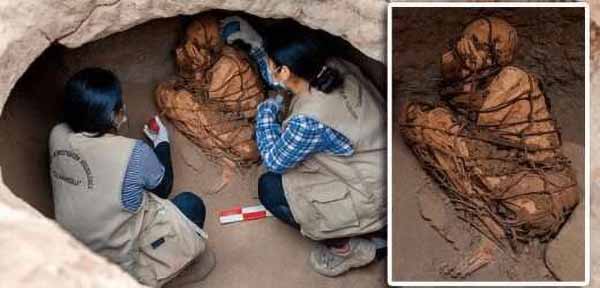
A team of researchers with the National University of San Marcos has found and recovered a well-preserved pre-Incan mummy in an underground tomb.
1,000-year-old mummy in fetal position found in underground tomb in Peru Live Science - January 6, 2022
Archaeologists have unearthed a mummy dating back around 1,000 years at the site of Cajamarquilla in Peru. The researchers discovered the mummy lying in a fetal position and bound by rope. At the time the mummy was buried, Cajamarquilla was a thriving city located on the right bank of the Rímac river about 16 miles (25 kilometers) inland, and was a place where people from the coastal and mountainous areas of Peru engaged in trade, researchers said in a statement. More than 10,000 people might have lived in the city at the time, the researchers said.
Peru archeologists find mummy up to 1,200 years old PhysOrg - December 1, 2021
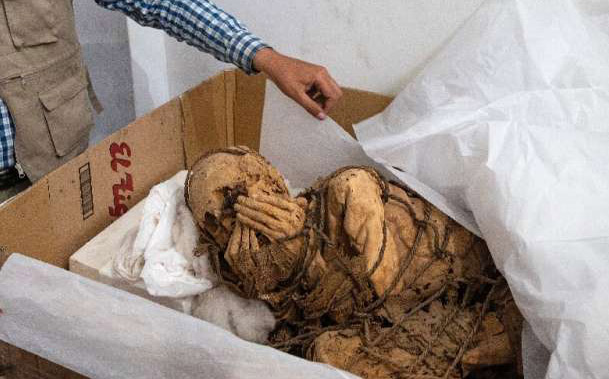
Archeologists in Peru working on a site in the outskirts of the capital Lima have unearthed a mummy believed to be between 800 and 1,200 years old - and, surprisingly, bound with rope. The remains are thought to be of a man aged 18-22 at the time of his death, with his hands covering his face.
Archaeologists discover a 1,000-year-old mummy in Peru Science Daily - May 29, 2018
Archaeologists have completed a significant excavation in Pachacamac, Peru, where they have discovered an intact mummy in especially good condition. Pachacamac's status as a Pre-Colombian pilgrimage site under the Inca empire. is confirmed by further evidence.
3D imaging reveals the face of a female Peruvian ruler 1,700 years after her elaborately tattooed body was wrapped in 20 layers of fabric and buried with a treasure trove of gold Daily Mail - July 5, 2017
She died in her twenties some 1,700 years ago and ruled over a desert valley in ancient Peru, where her elaborately tattooed body was wrapped in 20 layers of fabric and buried with weapons and gold objects. But a glimpse of the former priestess, the Lady of Cao, can now be seen in a replica of her face unveiled by culture officials and archaeologists. Using 3D forensics technology, the replica was based on the Lady of Cao's skull structure and took 10 months to create.
35 Photos: The Amazing Mummies of Peru and Egypt Live Science - March 17, 2017
Archaeologists used to unwrap Egyptian mummies with much fanfare in front of crowds, a stunt that destroyed cultural history and disrespected the deceased individual. Now, researchers can use computed tomography (CT) scans to noninvasively learn about mummies without literally unwrapping them. Here is a look at the science behind "Mummies," an exhibit about Peruvian and Egyptian mummies that runs from March 20 until Jan. 7, 2018, at the American Museum of Natural History in New York, and then returns to the Field Museum of Natural History in Chicago.
Tombs Filled with Dozens of Mummies Discovered in Peru Live Science - April 8, 2015
Dozens of tombs filled with up to 40 mummies each have been discovered around a 1,200-year-old ceremonial site in Peru's Cotahuasi Valley. So far, the archaeologists have excavated seven tombs containing at least 171 mummies from the site, now called Tenahaha. The tombs are located on small hills surrounding the site. The dead, likely numbering in the low thousands, towered over the living. Before rigor mortis set in, the mummies had their knees put up to the level of their shoulders and their arms folded along their chest, the researchers found. The corpses were then bound with rope and wrapped in layers of textiles. The mummies range in age from neonate fetuses to older adults, with some of the youngest mummies (such as infants) being buried in jars. While alive the people appear to have lived in villages close to Tenahaha. Photos
South American mummy ritually sacrificed BBC - February 27, 2014
A previously unidentified female mummy was killed in a ritual sacrifice in South America, new research has found. A team of scientists analyzed the skull to find evidence of a blunt trauma to the head, suggesting she died very quickly from the blow. DNA analysis also revealed she suffered from a parasitic infection called Chagas disease. Her symptoms indicated she would not have lived for much longer even if she had escaped her killers. Chagas is still endemic in South America - especially those living in poverty - and can be deadly if not treated early. The girl was likely to have come from a poor family.
Inca mummies: Child sacrifice victims fed drugs and alcohol BBC - July 29, 2013
Tests on three mummies found in Argentina have shed new light on the Inca practice of child sacrifice. Scientists have revealed that drugs and alcohol played a key part in the months and weeks leading up to the children's deaths. Tests on one of the children, a teenage girl, suggest that she was heavily sedated just before her demise.
Final Moments of Incan Child Mummies' Lives Revealed Live Science - July 29, 2013
Three Incan children who were sacrificed 500 years ago were regularly given drugs and alcohol in their final months to make them more compliant in the ritual that ultimately killed them, new research suggests. Archaeologists analyzed hair samples from the frozen mummies of the three children, who were discovered in 1999, entombed within a shrine near the 22,100-foot (6,739 meters) summit of the Argentinian volcano Llullaillaco. The samples revealed that all three children consistently consumed coca leaves (from which cocaine is derived) and alcoholic beverages, but the oldest child, the famed "Maiden," ingested markedly more of the substances. Coca was a highly controlled substance during the height of the Inca Empire, when the children were sacrificed.